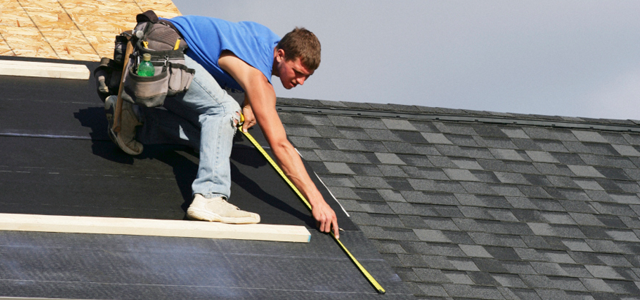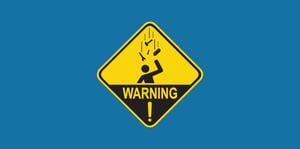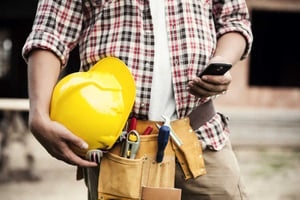Close to 6.5 million people work at approximately 252,000 construction sites on any given day across the country. Startlingly, the average rate of fatal injury in the construction industry is higher than the fatalities rate in any other industry. In the most recent report published by the Occupational Safety and Health Administration (OSHA) on the subject, 21.4% of worker fatalities in the private industry were in the field of construction. Specifically, out of 4,379 total worker deaths, 937 were construction related.
OSHA reports that there are four leading causes of jobsite worker deaths in the construction industry. These are falls, being struck by an object, electrocution, and being caught in/between (this includes being caught in or compressed by equipment or objects as well as being struck, caught, or crushed in collapsing structure, equipment, or material). According to the Bureau of Labor Statistics, these “Fatal Four” causes were responsible for 64.2% of construction worker deaths in 2015.
These statistics should serve as a stark reminder that accidents on the jobsite are a real and ever-present risk. As an exterior contractor, you need to be aware of the dangers posed by everyday hazards so you can take steps to prevent serious injury or even death. This article will look more closely at two of the most dangerous risks facing you and your team members, falls and being struck by an object, and offer tips on how to help prevent serious injury.
Falls
Over the years, falls have consistently accounted for a great number of fatalities in the construction industry. Several factors are often involved in falls. These can include unstable working surfaces, misuse of or failure to use fall protection equipment, and human error. In the exterior contracting industry, these falls most likely occur off of roofs and ladders.
The Bureau of Labor Statistics states that 81 percent of fatal falls were falls to a lower level. Of the cases where the height of the fall was known, more than two-fifths of fatal falls were from 15 feet or lower. Overall, fatal falls to a lower level accounted for close to 40 percent of fatal work injuries in the private construction industry in 2015. Roofs were the source of 106 deaths, with about half of those attributed to roof edges, and ladders were the source of 89 deaths.
Fall Protection
The inherent danger associated with roofs and ladders requires safety precautions and training to help prevent injury. OSHA cited that the failure to provide fall protection was the leading standard violation that lead to injury and fatality in the contracting business. There are two types of effective fall protection – prevention and training. Fall prevention consists of putting equipment in place to minimize the possibility of a fall or eliminate the need to climb up on a roof. Training consists of teaching how to properly use safety equipment and employ safety measures.
Roofs
When it comes to safety while working on roofs, the greatest danger seems to be falling from roof edges or when working on roofs with a steep slope. There are a number of preventative measures that can be taken to reduce the risk of falling:
- Personal fall arrest systems (PFAS)
- Fall restraint systems
- Guardrails
- Warning lines
- Safety monitors
- Covers for skylights and holes or openings
Workers must also be instructed on how to use the equipment correctly.
Ladders
Ladders are another source of injuries from falls. Dangers arise when users are holding objects in their hands while climbing a ladder, when they have wet, greasy or oily shoes, when they do not properly secure ladders, or when they are not properly trained on how to inspect a ladder for defects and how to safely use it.
Here are some preventative measures for working on a ladder:
- Always keep one hand on a side rail.
- Position your body in the center of the ladder – aim your belt buckle between the rails.
- Try to keep your body upright and stay as close to the ladder as possible.
- Move slowly and carefully.
- Do not overreach in any direction.
- Avoid repositioning the ladder while you are standing on it – climb down before you move it.
Struck by an Object
Being struck by an object is another major source of injury in exterior contracting work. The Bureau of Labor Statistics reports that in 2015, 519 workers were fatally struck by an object or equipment. Among those, 110 were struck by plants, trees, and vegetation and 54 by construction machinery or equipment. These are hazards that exterior contractors in the business of roofing, siding, windows and exterior painting face on a daily basis.
OSHA has offered some specific measures to help prevent injury or death from falling or flying objects:
- Always wear personal protective equipment such as hard hats, safety glasses, goggles, and face shields.
- Stack and secure your materials to prevent sliding or collapse.
- Keep work areas clear of clutter.
- Inspect tools and hoists to ensure they are in good condition.
- Train workers on the safe operation of power tools.
- Wear protective gear when using power tools and make sure guards are in place when in use.
- Reduce the compressed air used for cleaning to 30 psi and use only with guards and protective equipment.
Again, these measures are only effective if workers are properly trained on how to employ them.
How HOVER can help
In addition to these basic precautions, there are other ways to help prevent injury. One example is to use modern technology to your advantage. HOVER allows contractors to drastically reduce the amount of time spent on roofs and ladders as well as the time spent navigating a home’s perimeter. How? HOVER is a technology that can capture accurate measurements of a home exterior from only a few photos taken by a mobile device. When you use a tool like HOVER, you eliminate the need to climb on the roof to take measurements by hand. You also remove the need to trudge through landscaping or other obstacles to map the perimeter of a home. Another advantage is that you can order the correct amount of materials the first time, thereby making time spent on a roof or ladder more efficient and eliminating unnecessary additional work.
Safety First
The safety of you and your crew is vital. Do not make the mistake of minimizing the importance of employing proper prevention and training for your exterior contracting work.





